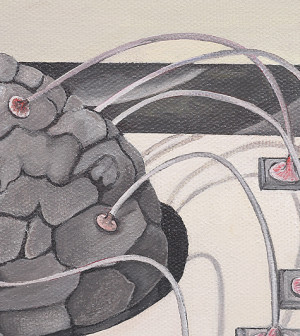- Understanding the Connection Between Anxiety and Depression
- How Daily Prunes Can Influence Cholesterol and Inflammation
- When to Take B12 for Better Absorption and Energy
- Epsom Salts: Health Benefits and Uses
- See What Saffron Can Do for Sleep and Heart Health
- 6 Common Mistakes to Avoid Before Your Physical
- Can Sweating Really Help You Beat a Cold?
- Strengthening Your Relationship: Practical Strategies
- Skip Storing This Everyday Product in the Fridge Door
- Green Tea + B3 Pairing May Boost Brain Health
Digital Compass Attached to Brain Helps Blind Rats ‘See’


New research in rats suggests a special compass might one day help blind people navigate their physical environments.
Using a head-mounted device, Japanese scientists attached a microstimulator and a digital compass to the brains of blind rats, and those rats were then able to move through mazes nearly as well as rats with normal vision.
The compass automatically detected the rat’s head direction and generated electrical pulses that indicated which direction — such as north or south — the rat was facing.
The blind rats were then trained to seek food in a T-shaped maze or a more complicated maze. With practice, the rats learned to use the device to solve the mazes, and their performance rivaled that of rats with normal vision.
The findings suggest that a similar system could help orient blind people, the University of Tokyo researchers said. In the case of humans, the device could be attached to the canes blind people typically use for walking around, the researchers said.
It should be noted, however, that animal research findings do not always translate to humans.
The study was published April 2 in the journal Current Biology.
“We were surprised that rats can comprehend a new sense that had never been experienced or ‘explained by anybody’ and can learn to use it in behavioral tasks within only two to three days,” lead researcher Yuji Ikegaya said in a journal news release.
The results suggest that it may be possible to use such sensors to improve blind people’s mobility, the researchers added.
More information
The U.S. National Library of Medicine has more about low vision and blindness.
Source: HealthDay
Copyright © 2026 HealthDay. All rights reserved.










